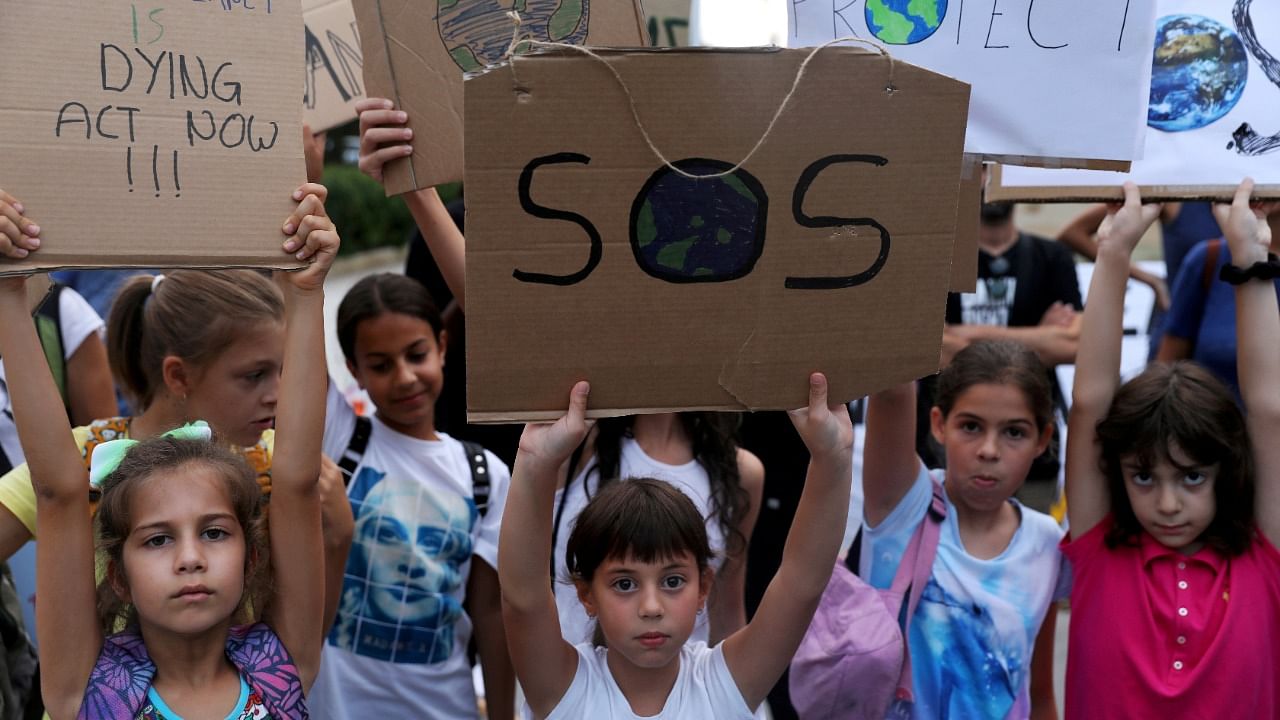
The Earth could warm by 1.5 degrees Celsius over pre-industrial temperatures within the next two decades, the UN Intergovernmental Panel on Climate Change said in its latest report on Monday, advancing the threat of such a dangerous tipping point in global warming.
Waving red flags on the near term temperature target set by the Paris agreement, the IPCC report says the goal of limiting the rise preferably by no more than 1.5 degrees Celsius by the end of 2100 could be breached between 2021-2040 even if nations meet their current emission reduction targets.
The other Paris goal of restricting the long term temperature rise within two degrees Celsius may also be breached between 2040 and 2060 in three out of five emission reduction pathways considered by the IPCC, underscoring an urgent need to undertake deep emission cuts.
“The planet will warm by 1.5°C in all scenarios. In the most ambitious emissions pathway, we reach 1.5°C in the 2030s, overshoot to 1.6°C, with temperatures dropping back down to 1.4°C at the end of the century,” says the report released ahead of the UN climate summit in Glasgow in November.
Scientists consider 1.5 degrees Celsius as a climatic guardrail breaching of which increases the risk and frequencies of devastating storms, rainfall, floods and drought causing unprecedented human misery and economic loss.
Despite contributing little to the global carbon budget, India remains one of the vulnerable countries.
“The new report suggests India would witness a further increase in extremes like heat waves, heavy rainfall and droughts in near future,” said M Rajeevan, former secretary, Ministry of Earth Sciences.
The Himalayas that witnessed a loss of snow cover since the 1970s will continue to see such decreases with the rise of snowline elevations. The glacier mass is also likely to decline with greater mass loss in higher greenhouse gas emissions scenarios.
With the monsoon rainfall likely to increase, scientists warned that the rising temperature and precipitation could increase the occurrence of glacial lake outburst floods and landslides over moraine-dammed lakes as seen in Uttarakhand in the recent past.
“While climate change is global, the challenges are always local. We need to disaster-proof every district of India, where the threats are severe and the population is increasing manifold,” Roxy Koll, a scientist at the Indian Institute of Tropical Meteorology, Pune and an IPCC lead author told DH.
Accepted by 195 countries, the report projects that in the coming decades climate changes will increase in every region.
For 1.5 degrees C of global warming, there will be increasing heat waves, longer warm seasons and shorter cold seasons. At 2 degrees C of global warming – if it happens - heat extremes would more often reach critical tolerance thresholds for agriculture and health.
In a 2018 report, the IPCC maintained that global warming would cross 1.5 degrees C between 2030 and 2052 at the current emission rate. Narrowing down the time frame further, the new report suggests the guardrail of 1.5 degrees could even be lifted in the 2030s.
For comparison, global surface temperature was 1.09 degrees C higher in 2011–2020 than 1850–1900 – the era of industrial revolution with larger increases over land than over the ocean.
But each of the last four decades has been successively warmer than any decade that preceded it since 1850. Global surface temperature in the first two decades of the 21st century (2001-2020) was 0.99 degrees Celsius higher than 1850-19009.
In 2019, atmospheric carbon dioxide concentrations were higher than at any time in at least two million years and concentrations of methane and nitrous oxide, both significant greenhouse gases, were higher than at any time in at least 800,000 years. Both contributed to global warming.
“The report is a wake-up call. We can no longer lose time in prevarication or in finding new excuses not to act— including empty promises of net zero by 2050,” said environmentalist Sunita Narain from the Centre for Science and Environment.
